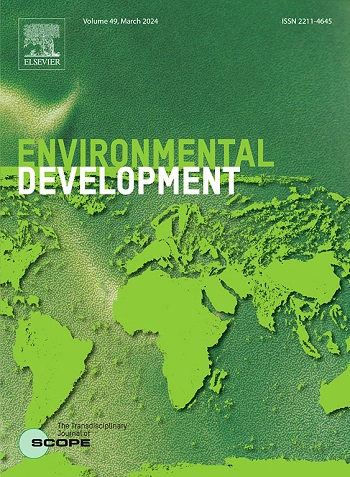Heat-related health impacts on primary schoolchildren's health: measured and estimated risks in Gauteng, South Africa
IF 5.3
2区 环境科学与生态学
Q2 ENVIRONMENTAL SCIENCES
引用次数: 0
Abstract
Background
Schoolchildren spend a substantial amount of time in classrooms and therefore, the classroom environment should be acceptable and tolerable with an aim to support their welfare and comfort. Globally, temperatures are projected to increase between 1.4 °C and 4.4 °C; however, Southern Africa will likely experience a temperature increase at twice the global rate, resulting in the prevalence of extreme temperatures and more intense heatwaves. An increase in the frequency and intensity of heat waves can lead to overheating in classrooms. This study aimed to describe classroom thermal conditions and understand possible impacts on schoolchildren's health.
Methods
A cross-sectional quantitative study was conducted among 904 grade 4 primary school children. The study collected meteorological data, i.e, hourly temperature and humidity data from the South African Weather Service's (SAWS) weather station closest to the participating schools and took place during summer. This data was used to calculate apparent temperature to determine the perceived human body temperature when exposed to the combined effects of temperature and humidity and analyse the potential health implications linked to the symptoms category developed by the United States National Weather Service and the National Oceanic and Atmospheric Administration. Schoolchildren also participated in this study by completing a self-reported hourly heat-related health symptom questionnaire. Data was analysed using STATA. Linear regression was used to investigate the association between apparent temperature and heat-related symptoms.
Results
The hourly temperature (mean of 34 °C) and humidity levels (maximum of 80.38 %) exceeded the World Health Organization and the United States Environmental Protection Agency's recommended levels. Out of the 456 apparent temperature range, 203 (44,5 %) of the readings was associated with no health risks, 226 (49,6 %) ranges fell within the caution category and 27 (5,9 %) within the extreme caution category these ranges were associated with health effects such as heat cramps, heat exhaustion and a heat stroke were possible with prolonged exposure. Regression results showed that for every 1 °C in apparent temperature, a 0.05 unit increase in the number of learners who report feeling tired between 8:00–9:00 is predicted; however, this was not statistically significant.
Conclusions
Future research should incorporate physiological measures to better assess the direct impact of heat on learner health and longitudinal and intervention-based studies are encouraged to evaluate the effectiveness of school-based heat adaptation strategies in low-resource settings.
与热有关的健康对小学生健康的影响:南非豪登省测量和估计的风险
学生在教室里花费了大量的时间,因此,教室环境应该是可以接受和容忍的,目的是支持他们的福利和舒适。全球气温预计将上升1.4℃至4.4℃;然而,南部非洲的气温上升速度可能是全球的两倍,导致极端气温的普遍存在和更强烈的热浪。热浪频率和强度的增加会导致教室过热。本研究旨在描述教室热条件,并了解可能对学童健康的影响。方法对904名小学四年级儿童进行横断面定量研究。这项研究收集了气象数据,即每小时的温度和湿度数据,这些数据来自离参与学校最近的南非气象局(SAWS)气象站,并在夏季进行。这些数据用于计算视温度,以确定暴露于温度和湿度综合影响下的人体感知温度,并分析与美国国家气象局和国家海洋和大气管理局制定的症状类别有关的潜在健康影响。小学生还通过完成一份自我报告的每小时热相关健康症状问卷参与了本研究。使用STATA分析数据。采用线性回归研究体表温度与热相关症状之间的关系。结果每小时温度(平均34°C)和湿度(最高80.38%)均超过世界卫生组织和美国环境保护署的推荐水平。在456个视温度范围中,203个(44.5%)读数与健康风险无关,226个(49.6%)范围属于警告类别,27个(5.9%)范围属于极端警告类别,这些范围与健康影响有关,如长时间接触可能导致热痉挛、中暑和中暑。回归结果表明,视温度每升高1°C, 8:00-9:00之间报告疲劳的学习者数量增加0.05个单位;然而,这在统计学上并不显著。结论未来的研究应纳入生理指标,以更好地评估热对学习者健康的直接影响,并鼓励纵向和基于干预的研究来评估低资源环境下校本热适应策略的有效性。
本文章由计算机程序翻译,如有差异,请以英文原文为准。
求助全文
约1分钟内获得全文
求助全文
来源期刊

Environmental Development
Social Sciences-Geography, Planning and Development
CiteScore
8.40
自引率
1.90%
发文量
62
审稿时长
74 days
期刊介绍:
Environmental Development provides a future oriented, pro-active, authoritative source of information and learning for researchers, postgraduate students, policymakers, and managers, and bridges the gap between fundamental research and the application in management and policy practices. It stimulates the exchange and coupling of traditional scientific knowledge on the environment, with the experiential knowledge among decision makers and other stakeholders and also connects natural sciences and social and behavioral sciences. Environmental Development includes and promotes scientific work from the non-western world, and also strengthens the collaboration between the developed and developing world. Further it links environmental research to broader issues of economic and social-cultural developments, and is intended to shorten the delays between research and publication, while ensuring thorough peer review. Environmental Development also creates a forum for transnational communication, discussion and global action.
Environmental Development is open to a broad range of disciplines and authors. The journal welcomes, in particular, contributions from a younger generation of researchers, and papers expanding the frontiers of environmental sciences, pointing at new directions and innovative answers.
All submissions to Environmental Development are reviewed using the general criteria of quality, originality, precision, importance of topic and insights, clarity of exposition, which are in keeping with the journal''s aims and scope.
 求助内容:
求助内容: 应助结果提醒方式:
应助结果提醒方式:


